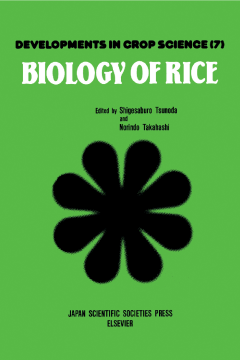
Additional Information
Book Details
Abstract
This book presents a wealth of both general and specific information about rice. The first section outlines the distribution and mutual relationships of various types of rice with special attention to the adaptive strategy of wild and cultivated rice, and to the relationships between different ecotypes and their adaptation to low temperature, different photoperiods or different humidities. The section on rice morpho-physiology compares the characteristics of rice and dry land crops and different ecotypes with regard to seed dormancy and germination; describes the important steps in the photosynthetic structure process and its adjustment to the course of evolution of cultivated rice; studies the root and nutrient uptake and the responses to hormones in terrestrial and aquatic plants; considers the reproductive nature in relation to tolerance to environmental stress; and discusses the morphological characteristics of rice panicle in relation to grain filling, sink-source balance and variation in yield components of panicle structure. The last section reviews the genetics of rice and includes new findings on chromosomal analysis, cytoplasmic analysis and gene analysis and reviews recent achievements in tissue culture and genetic engineering techniques.
The book is authoritative, well-documented and international in scope. It presents new and useful information of direct use to rice research workers and students, and of interest to crop physiologists, agronomists, plant physiologists and breeders throughout the world.
Authoritative chapters... prepared by well-known scientists from the universities and national institutes in Japan. The bibliography at the end of each chapter is extensive and thus the book is an excellent reference source.
Theoretical and Applied Genetics
